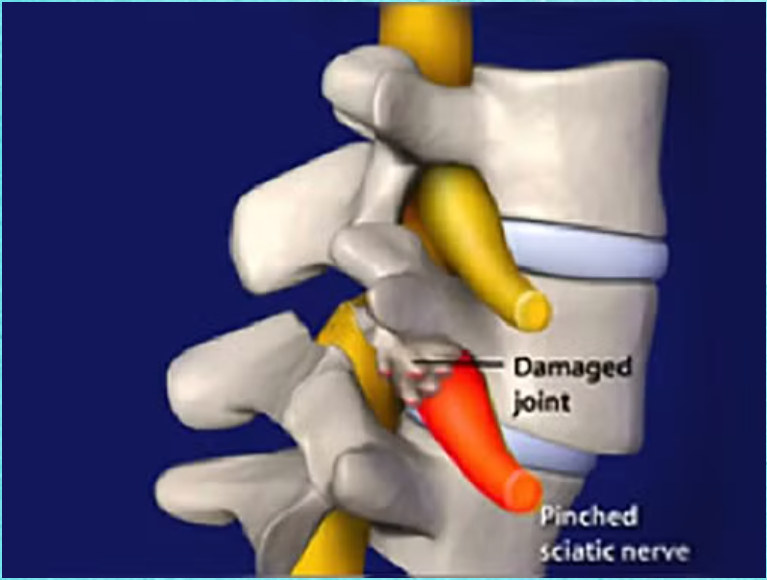A nagging backache can quickly escalate from an annoyance to a life-altering burden. For many, conservative treatments like physical therapy and medication offer relief. But when these avenues are exhausted and the pain persists, significantly impacting daily life, the conversation often turns to lumbar spine surgery.
The very mention of “surgery” can conjure images of apprehension and uncertainty. However, modern spine surgery has evolved dramatically. It’s no longer a last resort for the severely debilitated, but a targeted and often highly effective solution for specific conditions causing chronic low back pain.
This post aims to demystify the world of lumbar spine procedures, shedding light on what they entail, who might be a candidate, and what you can expect.
When is Lumbar Spine Surgery Considered?
It’s crucial to understand that surgery is not a one-size-fits-all solution. A thorough diagnostic process involving imaging (X-rays, MRI, CT scans) and a comprehensive medical history is essential. Generally, lumbar spine surgery is considered when:
- Conservative treatments have failed: This is the most significant indicator. If you’ve diligently tried non-surgical options for a reasonable period without significant improvement, surgery might be the next step.
- Severe pain significantly limits daily activities: If your pain prevents you from working, sleeping, or participating in activities you once enjoyed, it warrants further investigation.
- Nerve compression is evident: Conditions like herniated discs, spinal stenosis, or significant degenerative disc disease can compress nerves, leading to radiating pain, numbness, weakness, or even loss of bowel/bladder control (a medical emergency).
- Spinal instability is present: This can occur due to fractures, severe arthritis, or as a result of surgery on other spinal levels.
Common Lumbar Spine Procedures Explained:
The term “lumbar spine surgery” is a broad umbrella. Here are some of the most frequently performed procedures:
- Discectomy (or Microdiscectomy): This is a common procedure for herniated discs. If a disc bulges or ruptures and presses on a nerve, a surgeon can remove the herniated portion to relieve pressure. A microdiscectomy uses smaller incisions and specialized instruments, often leading to quicker recovery.
- Laminectomy/Laminotomy: These procedures are often used to treat spinal stenosis, a narrowing of the spinal canal.
- Laminectomy involves removing the entire lamina (the bony arch at the back of a vertebra) to create more space for the spinal cord and nerves.
- Laminotomy involves creating an opening in the lamina rather than removing it entirely, preserving more of the bone.
- Spinal Fusion: This procedure aims to stabilize a painful segment of the spine by joining two or more vertebrae together. Bone grafts or metal implants are used to encourage the bones to grow into a single, solid unit. Spinal fusion is often performed when there’s significant instability, severe degenerative changes, or after extensive decompression surgery.
- Foraminotomy: Similar to a discectomy, this procedure widens the foramen (the opening where a nerve root exits the spinal canal) to relieve pressure on a compressed nerve.
- Artificial Disc Replacement (ADR): In select cases, a degenerated disc can be removed and replaced with an artificial device that mimics the natural disc’s function, allowing for continued motion in that segment of the spine. This is an alternative to fusion for certain types of degenerative disc disease.
What to Expect on Your Surgical Journey:
The path to a pain-free back through lumbar spine surgery involves several key stages:
- Consultation and Diagnosis: This is where your journey begins. You’ll discuss your symptoms in detail with a spine specialist, undergo a physical examination, and likely have imaging tests to pinpoint the cause of your pain.
- Pre-operative Planning: Once surgery is deemed appropriate, your surgical team will explain the procedure in detail, discuss potential risks and benefits, and provide pre-operative instructions. This is your chance to ask any and all questions.
- The Surgery: The type of anesthesia, the duration of the surgery, and the specific techniques used will depend on the procedure itself. Minimally invasive techniques are increasingly common, leading to smaller incisions and less tissue disruption.
- Post-operative Recovery: This is a crucial phase. You’ll typically spend time in a hospital for monitoring and pain management. Physical therapy will often begin soon after surgery to help you regain strength, mobility, and proper posture. The recovery timeline varies significantly depending on the procedure and individual factors.
- Rehabilitation and Long-Term Management: Adhering to your rehabilitation program is paramount for optimal outcomes. This often involves a structured approach to gradual activity increase and continued exercises. Long-term strategies may include maintaining a healthy weight, regular exercise, and good ergonomic practices to prevent future issues.
Is Lumbar Spine Surgery Right for You?
The decision to undergo lumbar spine surgery Freehold is a significant one. It requires careful consideration, open communication with your healthcare provider, and a realistic understanding of the process. While surgery offers the potential for substantial pain relief and improved quality of life, it’s not a magic bullet.
If you’re struggling with persistent low back pain, don’t hesitate to seek expert medical advice. A skilled spine surgeon can help you navigate the complexities of lumbar spine procedures and determine if this surgical path might lead you towards a pain-free future.
Disclaimer: This blog post is for informational purposes only and does not constitute medical advice. Always consult with a qualified healthcare professional for any health concerns or before making any decisions related to your health or treatment.
